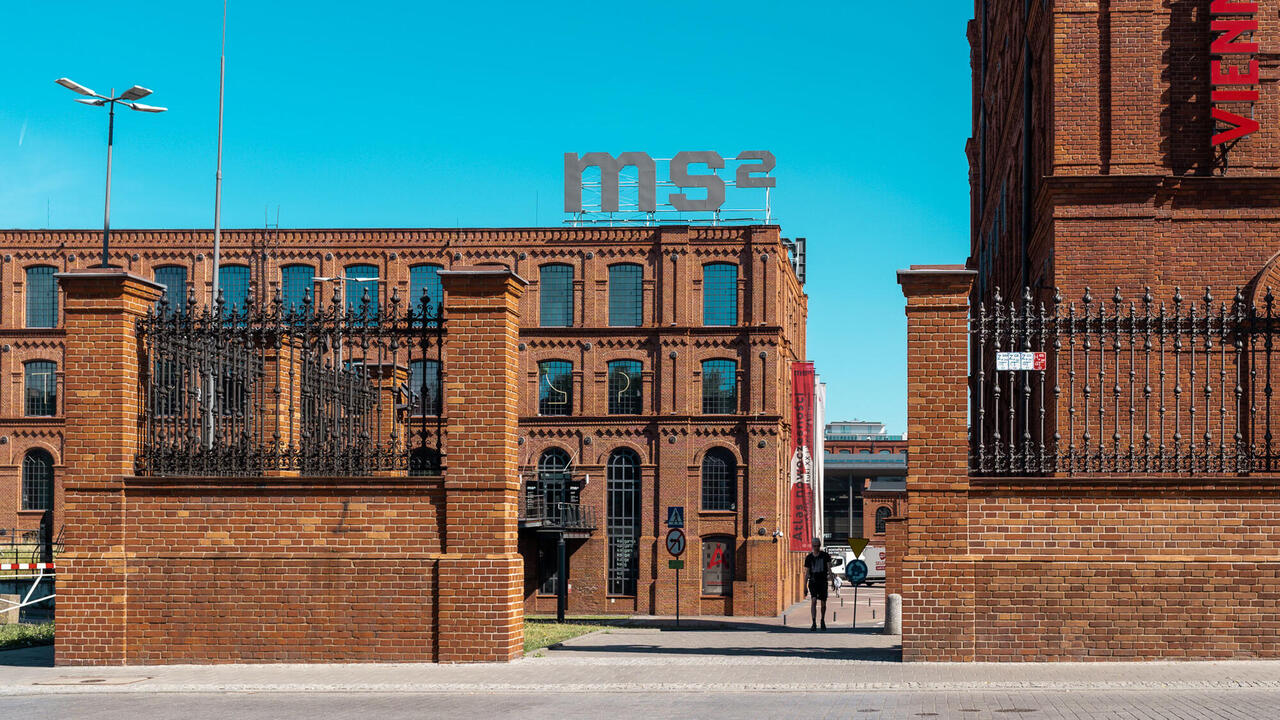Mirosław Bałka
Muzeum Sztuki, Łódź, Poland
Muzeum Sztuki, Łódź, Poland

Just months before the fall of the BerlinWall in 1989, Mirosław Bałka was invited to take part in an itinerant group show called ‘Dialog’. For its Warsaw edition in 1990, Bałka took a section of the wooden construction fence that surrounded the local Centre for Contemporary Art, laid it on the floor, poured salt into the grooves of its weathered blue planks and affixed a miniature concrete skull to one end (230×107×10 / Blue Wave, 1990). Here, a brilliantly deconstructed metaphor of peril and passage emerged not only at a historically charged moment but at a point when the artist shifted away from figuration, seeking a different form for his deeply personal themes. This was one of several such turning points brought to the fore in ‘Nerve. Construction’, curated by Kasia Redzisz at Muzeum Sztuki, Łódz´: the largest survey of Bałka’s work in Poland to date, spanningthe mid-1970s to the present day.
Across 13 rooms, the show teases out Bałka’s recurring motifs and often oblique references. One such motif is the humanfigure, ranging from a detailed rendering of a headless corpse, made with jute cloth and vine twig (John 15.6, 1989), through the rugged silhouette of salvaged wood in Kouros (1998) to Abel (1989), in which Bałka substitutes the body with an outline of a coffin painted on panels with soil and glue. It’s captivatingto see how the figure gradually disappears in his work, only to re-emerge in different forms in later works, which – like his celebrated Tate Turbine Hall commission, How It Is (2009) – rely on the viewer’s physical presence. At the same time, the several dozen ink drawings (rarely exhibited before now), alternating between horror and humour, make it evident that the artist never lost his interest in figuration.

Bałka emerged on the Polish art scenein the mid-1980s, along with a constellationof collectives exploring the language ofneo-expressionism and defying the country’s official cultural structures. He co-foundedthe artist collective Neue Bieremiennost (1986–89), whose events frequently combined exhibitions with music and mockery, denouncing national holidays and traditionsas grotesque rituals. That period in Bałka’s career is echoed in Boomerang. Negative (1986), a mould for 41 plaster boomerangs commemorating the 41st anniversary of the end of World War II. Having topped them with ash, sand or grass, the artist tossed the boomerangs at a slide projection of vacation snapshots from Poland’s lake district. As befits a plaster object coming into contact with a hard surface, none of the boomerangs came back.
This sardonic engagement with history gave way to a more inquisitive approach in the 1990s, when Bałka began spending more time in his family house in Otwock, using it asa studio and a repository for found materials. Much of Otwock’s populace disappeared on a single day in August 1942, when Jews who had been forced into the local ghetto – the second largest in the Warsaw district – were taken to the deaths camps of Treblinka, leaving the magnificent villas of the once-thriving spa resort as silent witnesses to the atrocity. Bałka’s visits to Otwock’s neglected Jewish cemetery, as he describes it, gave him a sense of ‘responsibility and obligation’ to address the town’s history, something that became embedded in his practice ever since.
While the artist has directly addressedthe Holocaust, the means he employs are essentially minimal. In Kategorien. Tragbar (Categories. Portable, 2005), four suspended lengths of coloured thread are set in slow motion by tiny engines; the colours denote the categories ascribed to prisoners in the Nazi camps. Barely noticeable yet easily disturbed by the slightest gesture, these subtle, fragile traces are meant to echo the artist’s slow discovery of history. The drawing H/R Wybrzeże Kościuszkowskie Warszawa (2015), contrasts two adjacent buildings on Warsaw’s river bank: one is home to the Sculpture Faculty of the Academy of Fine Arts (where Bałka is a professor in a different department); the other hosted the trial of Auschwitz commander Rudolf Höss in 1947. Bałka does not look to the past for consolation; rather, he is concerned with the remnants of past rifts that affect the present. The first work in the exhibition, Nerve (2015), is a subtle scribble in Hebrew, in red paint on the mirror facing the entrance – a reminder of the family of Jewish industrialists who once owned the building. Like his safe haven in Otwock, which only revealed its sinister past upon inspection, Bałka asks his audience to consider that their world may be built on someone else’s suffering. His Blue Wave made me think of those who now risk their lives to reach Europe, seeking a safe haven, leaving behind more empty, silent places.
























